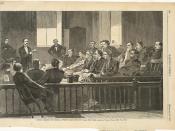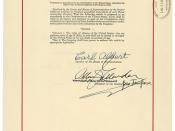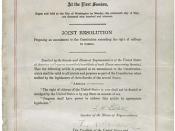From the Federal Crimes Act of 1790 to Miranda v. Arizona 364 U.S. 436 (1966) the Sixth Amendment right to counsel had developed tremendously. This essay will explore the development of the Sixth Amendment, including what the Sixth Amendment is and when it applies to a individual. The notion of effective counsel will also be defined by the Court.
The Sixth Amendment was long interpreted as only meaning the right to counsel of ones choice and at ones own expense. It has since come to mean the right to appointed counsel for those who cannot afford one. The shift came in Powell v. Alabama, 287 U.S. 45 (1932), or the famous Scottsboro Case. The convictions in that case (of several black youths accused of raping two white women) were overturned on ground that the defendants did not receive a fair trial because their right to effective counsel were denied.
In Betts v. Brady, 316 U.S. 455 (1942), the Supreme Court ruled that only in special circumstances, should counsel be appointed. However, in Gideon v. Wainwright, 372 U.S. 335 (1963), the Court overturned Betts and extended the right to counsel to the accused in all states in all criminal cases. In Argersinger v. Hamlin, 407 U.S. 25 (1972) the Court applied the right to counsel to all offenses involving the possibility of imprisonment. The Sixth Amendment right to counsel has came along way.
The Sixth Amendment guarantees an accused the assistance of counsel, the rights to be informed of charges and to confront accusers, as well as a right to a speedy and public trial by an impartial jury in all criminal cases. The right to counsel applies whenever a person feels they need it.
The right to counsel includes a right to effective counsel. In United States v.


